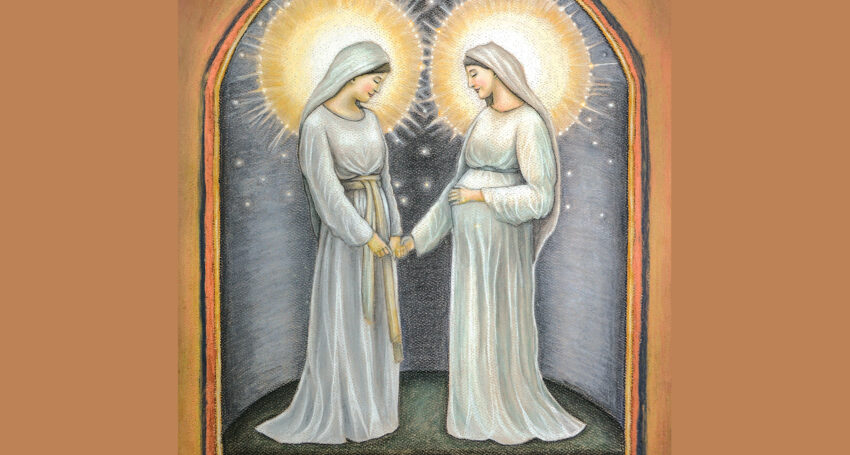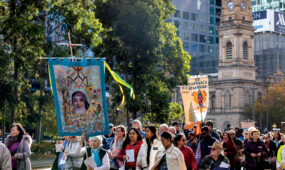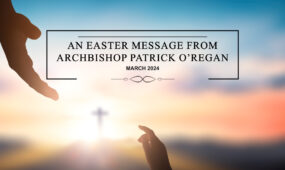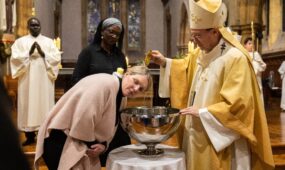Mary and Elizabeth, women for all time
Opinion
According to Luke’s Gospel, it is immediately after her conversation with the Angel Gabriel that Mary sets off ‘with haste’ to visit her kinswoman Elizabeth in the hill country of Judaea. The beautiful image chosen for this year’s Marian Procession features the encounter between the two women – the older woman heavily pregnant and the younger still in the earliest stages of pregnancy.

The meeting between these two women is quite extraordinary at more than one level. First, the voices in this story are purely female. Even though the women are meeting in Zachariah’s house, Elizabeth’s husband is not present and even if he were he would not be able to speak, having been struck dumb after doubting the angel’s message that his aged wife would bear a son. No, here are two women who are both playing central roles in the story of redemption – Elizabeth preparing for the birth of the precursor of the Messiah, known best to us as John the Baptist, and Mary carrying within her the very son of God.
Advertisement
Secondly, Elizabeth has already been described as ‘righteous in the sight of God, living blamelessly all the commandments of the Lord’ (Lk 1:6) and now is described as a person of deep faith and spiritual awareness, indeed as someone ‘filled with the Holy Spirit’. Because of this she not only recognises Mary as being graced by God but meriting the name ‘mother of my Lord’. With these words Elizabeth is truly acting as a prophet, that is, as one who speaks God’s truth. It is at this point that Mary proclaims her great prayer of praise, the Magnificat, acclaiming the gracious goodness of God that reveals itself in love and care for the lowly, the downtrodden and the oppressed.
Both Mary and Elizabeth are ‘women of grace’. By this we mean they are able to recognise the life-giving presence of God in everything that exists because their hearts are attuned to God. Not only this, but they trust implicitly in God’s word and are ready to follow God’s call regardless of the consequences. And it is always love that is at the core of this call.
Mary, when she learnt that her elderly cousin was soon to give birth, immediately made plans to visit her, to support her, to be a companion to her in this new and rather daunting experience. And Elizabeth, in welcoming Mary to her home, extended hospitality and friendship. This hospitality – intentionally putting the needs of another before the needs of self – is an authentic reflection of God’s love for all people. It is the mark of those who are most truly human, since it is how human beings act when they are most in touch with the divine.
Advertisement
In Mary and Elizabeth we have a wonderful example of what can happen when hearts and minds are open to God’s word and God’s grace. They have been models for countless other women through the ages whose hospitality, generosity, friendship and goodness have ‘proclaimed the greatness of God’ and whose joy and peace have been drawn from ‘God, their saviour’. Mind you, it is not only for women that Mary and Elizabeth are models for authentic Christian living; they are models for all the baptised, for all who wish to ‘live through love in God’s presence’ (cf. Ephesians 1:4).
As we take part in the Marian Procession this month, let every step we take, every ‘Hail Mary’ that we pray, strengthen our resolve to be ‘people of grace’ whose lives are marked by a willingness to listen with the ‘ears of our heart’ to the voice of God and then to share the love of God with others through sensitive kindness and joyful generosity.
Dr Jenny O’Brien is team coordinator and liturgy educator with the Office for Worship






